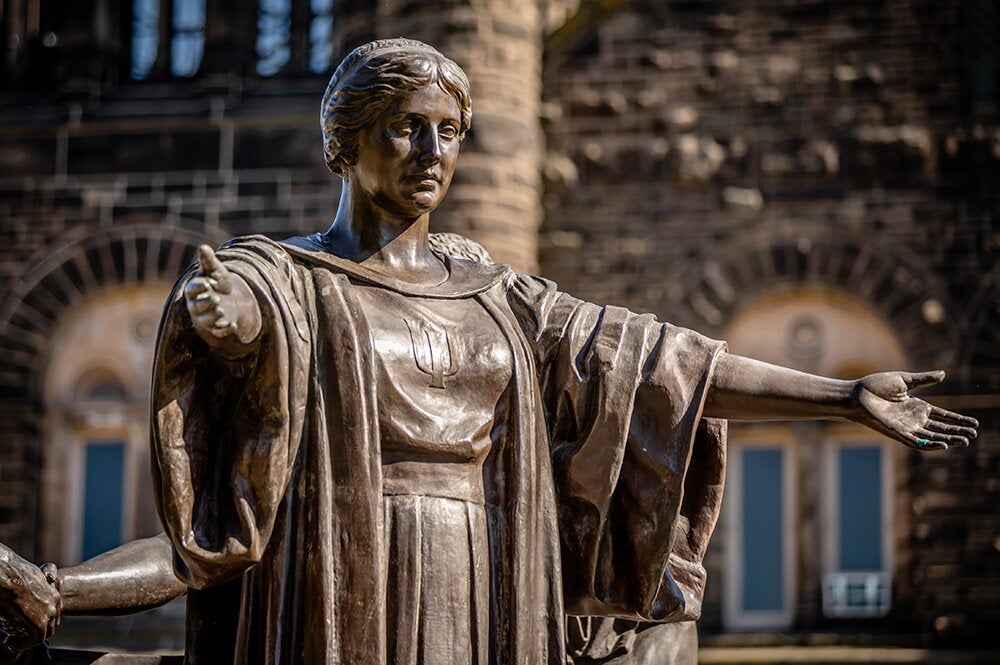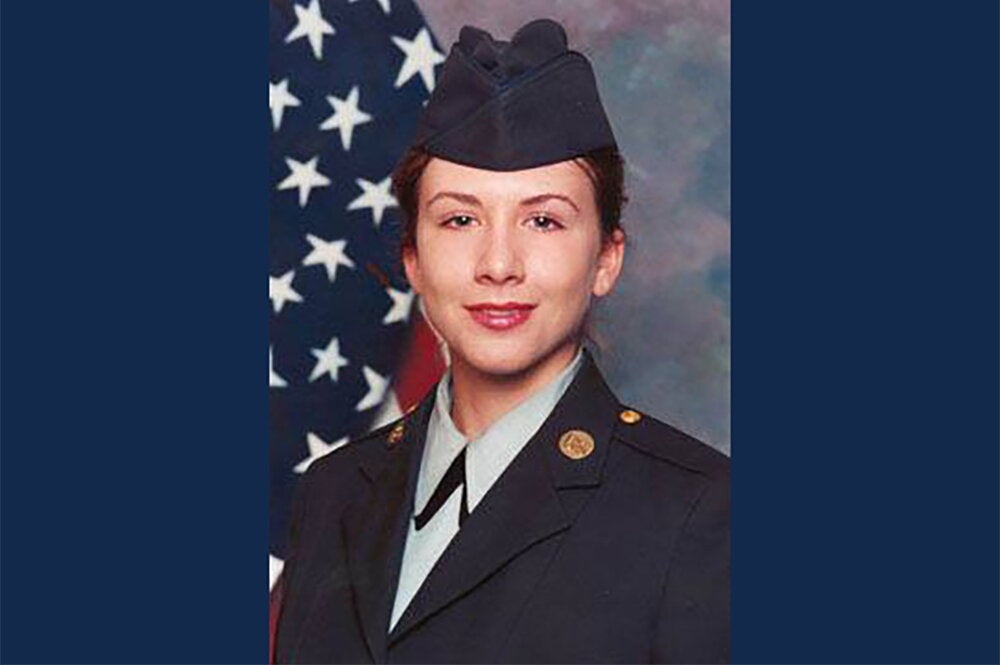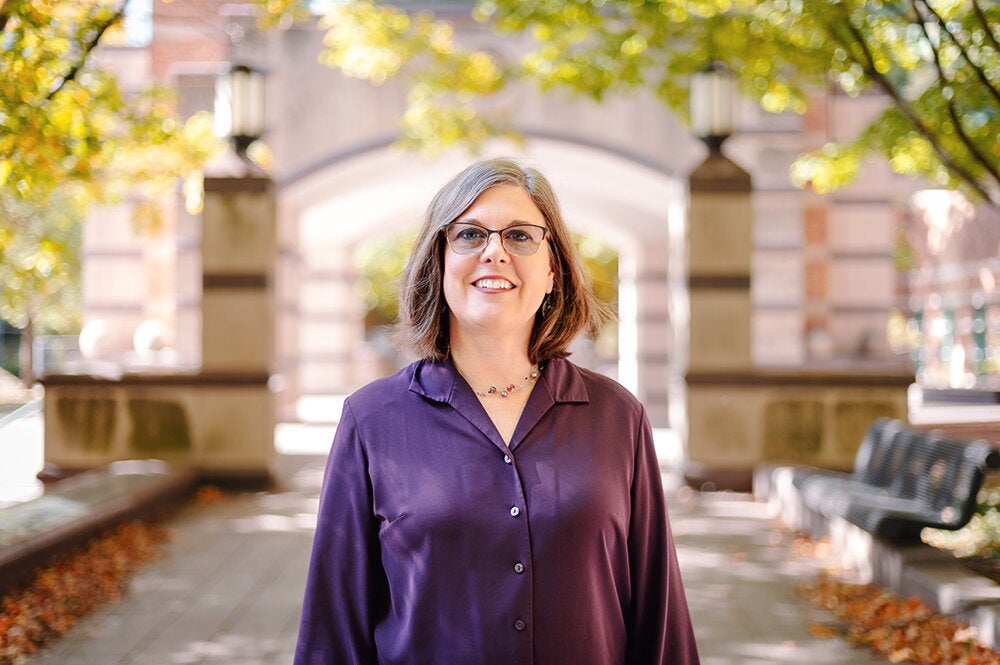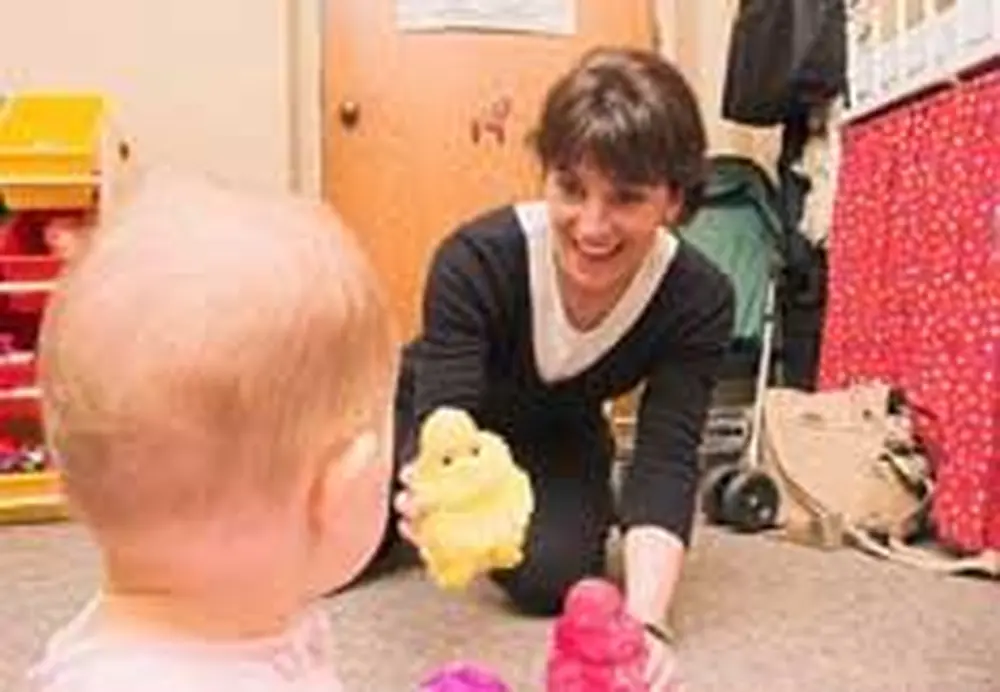
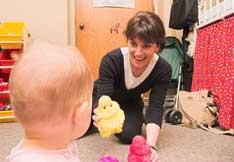
Don't try to hoodwink that baby. In contrast to conventional wisdom, infants grasp sophisticated psychological reasoning at a much earlier age than previously believed.
LAS psychology professor Renée Baillargeon studied several dozen 15-month-olds and found that they could distinguish between certain true and false beliefs. Past studies, Baillargeon says, suggested that "between 3 and 4 years of age, children...begin to understand that beliefs are only representations of reality, which can be true or false."
The new findings could potentially lead to an early screening tool for autism, a developmental disability marked by a failure on false-belief and related tasks.
In a non-verbal experiment, each of the 56 participating babies sat on a parent's lap and faced an actor (a U. of I. student). On the table between the baby and the actor were a toy watermelon slice and two different colored boxes.
The actor picked up the watermelon slice, played with it, and then hid it in the green box. On subsequent trials, the actor reached into the green box, as though to grasp the watermelon slice she had hidden there. Then, seemingly unbeknownst to the actor but in sight of the infant, the watermelon slice moved to the yellow box. This change created a false belief for the actor as to the location of the coveted watermelon slice.
The infants expected the actor to search for the watermelon toy in the green box (where she falsely believed it to be), and not in the yellow box (where it actually was and where the infants knew it to be). The infants looked reliably longer when the actor searched the yellow box, as though surprised by this unexpected event.
If the actor was present when the watermelon slice moved from the green to the yellow box, the infants expected the actor to search the yellow box, and they were surprised if the actor went to the green box instead. The infants attributed to the actor a true belief that the toy was hidden in the yellow box, and they expected her to act accordingly.
"Infants understood that the actor could have a true or a false belief about the toy's location, and they always expected her to act in a manner consistent with her belief," Baillargeon says. "Looking-time is the gauge. This is the violation-of-expectation method: Babies look longer at events they view as unexpected. It is a 'whoa' look, a state of heightened attention. It's like it is in everyday life. You expect something and then when it's not what it should be, you tend to look longer, as when we watch a magic show.
"If 15-month-olds can reason about what others believe, it means that psychological reasoning is much more sophisticated than we thought, and begins at a much earlier age than we had thought."
The study was part of the doctoral research of Kristine H. Onishi, now on the psychology faculty at McGill University in Quebec, Canada. Funding was provided by a grant to Baillargeon from the National Institute of Child Health and Human Development and a predoctoral training grant to Onishi from the National Institute of Mental Health. Results were published in the April 8 edition of Science.
